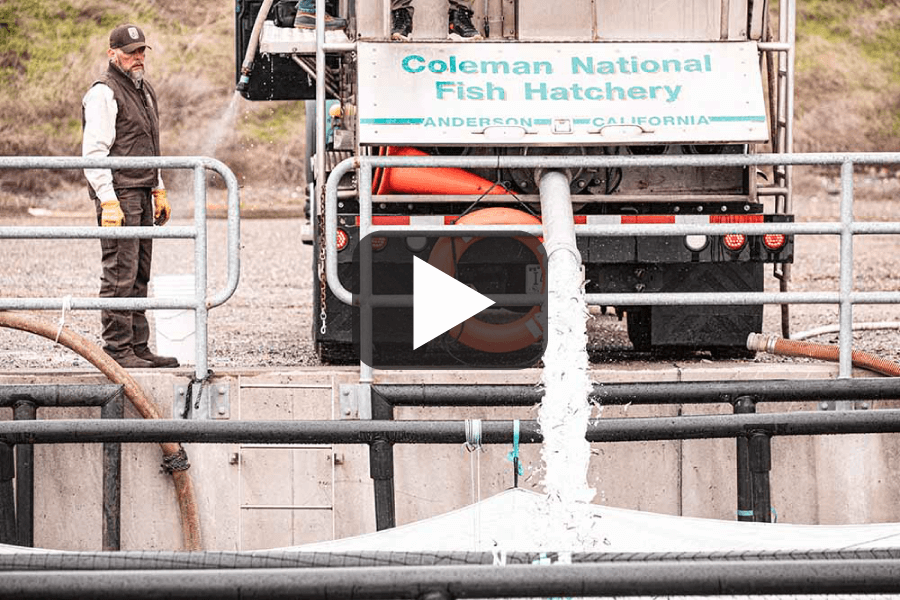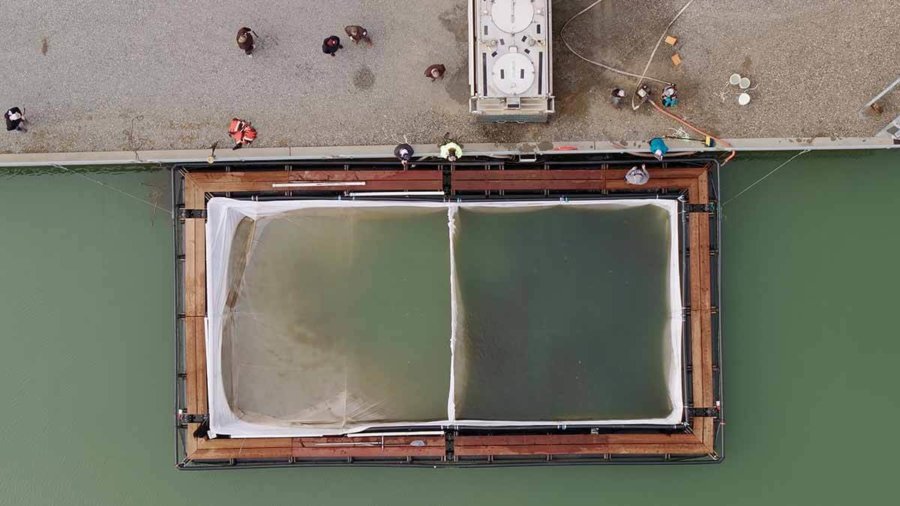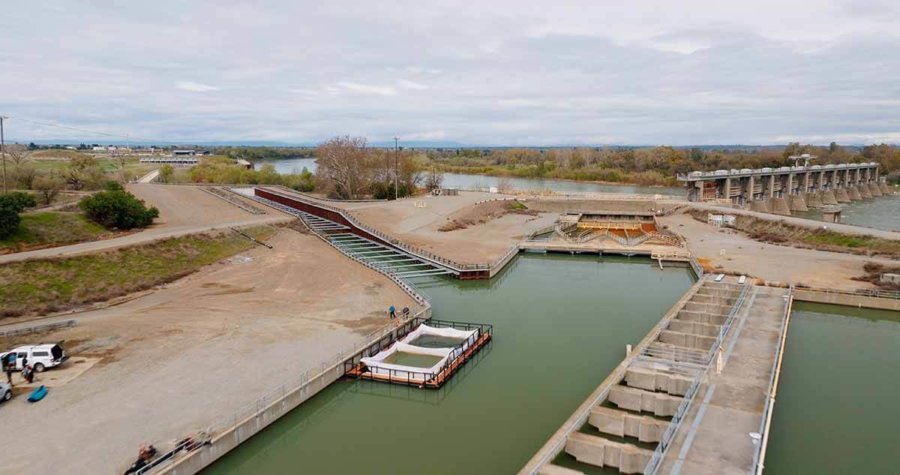
The Net Pen Project puts hatchery juvenile salmon in river water to decrease straying
Approximately 540,000 Sacramento fall-run juvenile salmon spent three weeks growing in large protective net pens in the Tehama-Colusa Canal forebay so that the fish could imprint on Sacramento River water in hopes more will return up the river as adults.
CLICK HERE OR ON THE IMAGE BELOW TO WATCH THE PROJECT UNFOLD

When juvenile salmon from the Coleman National Fish Hatchery are trucked to the San Francisco Bay, they miss key olfactory cues that help them navigate back as adults. Because these fish are reared on Battle Creek and do not travel down the Sacramento River, they tend to stray into other rivers when returning from the Pacific Ocean to spawn. Straying can impact the hatcheries’ ability to obtain enough broodstock to meet their production goals.
“We see the Net Pen Project as a critical piece to a larger effort of diversified release strategies we have been advocating for,” said George Bradshaw, President of the Pacific Coast Federation of Fishermen’s Associations. “We look forward to more collaborative projects among fishermen, farmers, water users, and public agencies in the future.”
Juvenile salmon were fitted with coded wire tags at the Coleman National Fish Hatchery along Battle Creek and transferred to a net pen – an in-water space with a predator-protection net – in the Tehama Colusa Canal forebay system, which is directly connected and receives fresh water from the Sacramento River.

The Bridge Group, a solutions-oriented coalition consisting of the Sacramento River Settlement Contractors, Golden Gate Fishermen’s Association, Pacific Coast Federation of Fishermen’s Associations, the NorCal Guides and Sportsmen’s Association, and Northern California Water Association, worked with the U.S. Fish and Wildlife Service and Tehama-Colusa Canal Authority to implement this project.
“This project proves when diverse stakeholders come to the table with the same goal of recovering our salmon populations, we can make a real impact for the betterment of our environment and species,” said Thad Bettner, Executive Director of the Sacramento River Settlement Contractors. “We look forward to further studying this salmon recovery approach and hope we can replicate the project on a larger scale in years to come.”
The fish were fed and raised in two separate pens. Half of the fish were delivered to San Pablo Bay by truck, and the other half were released in the Sacramento River waters near Battle Creek. Additionally, this group of fish was released in the river with other hatchery fish during specific pulse flows in hopes of improving survival to the ocean.

Fish are trucked to the San Francisco Bay from hatcheries when conditions on the Sacramento River are not favorable to in-river releases. Trucked fish also reach the ocean in greater numbers as they can avoid predators and other obstacles as they migrate downriver.
“Actions like the Net Pen project are critical to help salmon imprint on their native waters so that they can return home as adults to spawn,” said James Stone, President of the Nor-Cal Guides and Sportsman Association. “We see this collaborative effort as one critical step to creating long-term stability for ocean and inland fisheries.”
Salmon typically spend three years in the Pacific Ocean before returning upstream. Results from the effort are expected in 2028 or 2029.
U.S Fish and Wildlife, which operates Coleman National Fish Hatchery, supplied the fish for the study and will assist in the review of the salmon returns. The Sacramento River Settlement Contractors funded the net pen operations, while TCCA provided labor, feeding and oversight. The Bridge Group appreciates the USFW staff at Coleman National Fish Hatchery for working on the study and supplying fish for this effort.
Learn More:
www.pcffa.org
sacvalleywater.org
sacvalleywater.org/conservation/salmon-net-pen-project
ncgasa.org
www.tccanal.com
www.ggfa.net
Download Net Pen Project Document




